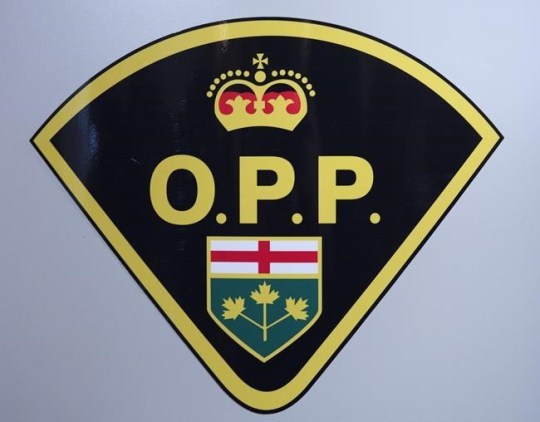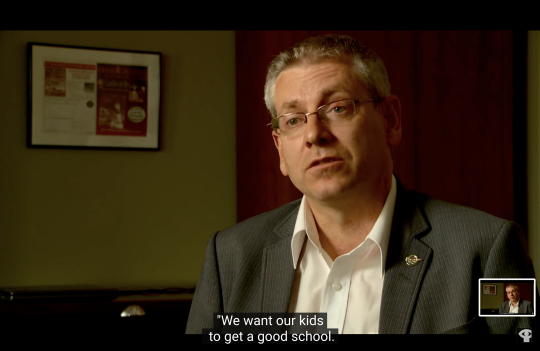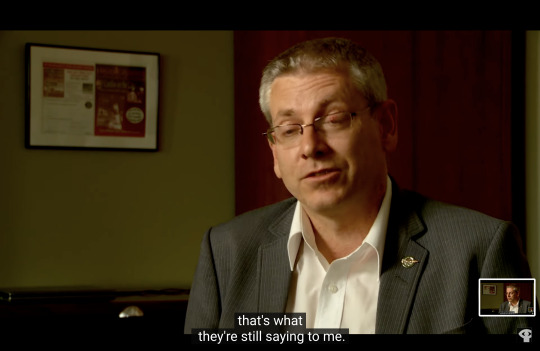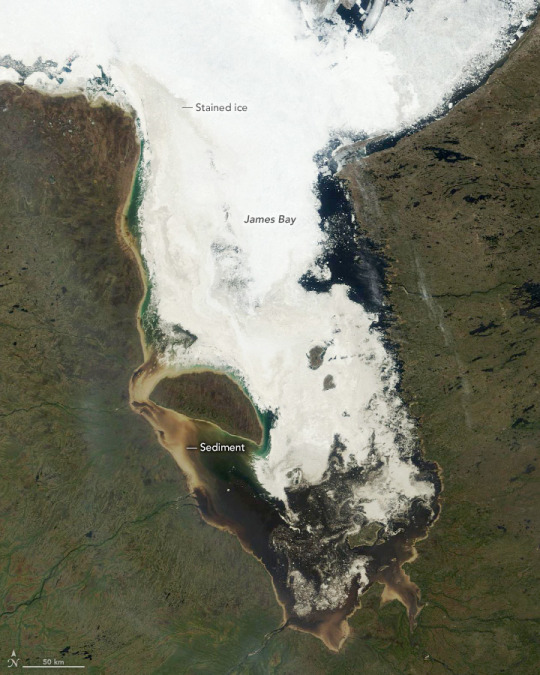#attawapiskat
Text
A Juno-nominated musician from Attawapiskat, Ont., is leaning into his Cree culture and language in some new music and an upcoming book.
Adrian Sutherland, an Omushkegowuk Cree singer-songwriter, released a new song on Aug 11, called Notawe, meaning, "father." The term is also often used to describe "Creator."
Sutherland wants in his work to focus on what makes him unique.
"This was actually the first time I wrote a full song in Cree," said Sutherland in an interview with Dorothy Stewart on CBC North's Cree-language radio.
"Being Cree, being Indigenous, being from the far north and coming from the bush makes me different," said Sutherland. [...]
Continue Reading.
Tagging: @politicsofcanada
119 notes
·
View notes
Text
https://www.airlinesexplore.com/airports/flight-to-attawapiskat-airport
0 notes
Text
Remember when the Chief of Attawapiskat was doing her hunger strikes for clean water for her reserve & people said that her hunger strike "wasn't real" because she only ate fish broth (which has historical & cultural & political significance) and that Attawapiskat couldn't have possibly needed it or be poor because the chief had a new car
31 notes
·
View notes
Text
Interview: Adrian Sutherland ‘Precious Diamonds’ Reflects on Grounding Elements In Life
Interview: Adrian Sutherland ‘Precious Diamonds’ Reflects on Grounding Elements In Life @attaboyadrian #americanahighways #preciousdiamonds @hannahmenzies @americanahighways #newmusic2024 #attawapsikat #firstnation #jamesbay
Adrian Sutherland photo by Joey Senft
Adrian Sutherland Precious Diamonds Reflects on Grounding Elements In Life
Adrian Sutherland hails from the far north of Canada and is a member of Attawapiskat First Nation on James Bay. He’s had many years of experience writing and performing, but only started down the road of being a solo artist a few years ago. Working with Nashville-based…

View On WordPress
0 notes
Text
Fishing Beteau Lake and the Attawapiskat River | Northern Ontario Travel
0 notes
Text
nov 28 - Idle No More 2012
PRE LECTURE / HOT TAKE
In 2012, I was eleven years old and only remember hearing about this social movement in passing from my parents. I definitely had no idea that flash mobs were involved. The Kuttner reading paints a beautiful picture of the round dances and other celebratory acts of resistance. Kuttner describes this scene as a powerful visual symbol. These round dances remind me of the carnival at the Battle of Seattle! Very cool to see an overlap of fun-like tactics!
I enjoyed the documentary aimed to inform Canadians of the major pillars of the Idle No More Movement. This short video highlights the systemic barriers Indigenous people face, which lead to an ongoing health crisis. I think that the folk in this video are inspiring because, despite government oppression, these people are standing up for what is right.
Chief Theresa Spence from Attawapiskat went on a hunger strike that lasted 44 days. This reminds me of the women who fought for their right to vote. This tactic is powerful as it draws the public's attention. However, it is dangerous as one could experience severe health consequences. While Chief Theresa Spence was not force-fed like the suffragettes, she was hospitalized for dehydration and determination. This shows how dedicated these women are to their causes.
My hot take is not shocking, but I think many people agree with it. I think that as someone who benefits from these systems as a white, educated female, I need to educate myself on the historical relationship Canada has with Indigenous people and listen to those who are telling their stories. I think that is essential that indigenous voices are being uplifted to avoid situations where people are speaking on their behalf because often those privileged with opportunities to speak are telling stories that are not theirs to tell.
POST LECTURE / MODERN DAY CONNECTION / REVISED TAKE
I am floored by "Trick or Treaty" I have never considered HOW treaties came to be. More specifically, it never occurred to me that Indigenous people most likely did not understand what was going on because treaties are a colonial practice, and they did not speak English. How could Indigenous people understand what cede, release, surrender, and yield meant if they did not speak English? I am shocked to learn that the diaries of those acting on behalf of the crown admitted to the differences between the oral and written treaties.
Additionally, I had no idea that the band council was an imposed structure. I naively assumed that this was the way that Inidengious people operated. I am especially saddened by imposing structures into these communities that may not have operated in that manner.
I did not realize pre-lecture that these issues that people advocate for affect us all. Serpent River, Grassy Narrows, the "cancer alley" of Aamjiwnaang, Fort Chippewyan and the Debeers mines near Attwaspiskat are crises that affect us all. We have one planet we must take care of it! However, as more non-indigenous folk get involved, I am reminded of a quote from the Occupy Wall Street AL Jazeera video in which one of the interviewers said something along the lines of " it took white girls getting pepper sprayed to care." In other words, people only seem to care when white folks are involved.
I think that this week connects to OWS in that one of the elements of the logic of the swarm is the principle of listening to your neighbourhood. This matters because local info leads to a global swarm, and global support is needed to tactile this human rights and environmental issue.
My modern-day connection is Greta Thunberg's climate activism. While she is not an indigenous person, she struggles to be heard as she is part of a population (youth) whose opinion is deemed unworthy of consideration. Greta too, needs to rely on tactics like the logic of the swarm to sway public opinion.
In class we were asked where are we now? The women who founded Idle no more say that the movement is still going strong. I think this is true as there are more conversations about taking on decolonization. In response to this question, my revised take is that we need to break down what decolonization means and not simply use it as a buzzword. There are a lot of calls to take on decolonizing practices, but not a lot of conversations about what this looks like for different institutions. To figure this out, we must connect with indigenous people.
0 notes
Text
Charges Laid in 1973 Homicide of Helen Carpenter
Charges Laid in 1973 Homicide of Helen Carpenter
#unforgotten #coldcase #sharethispost #truecrime #homicide #mmiw #mmiwg2s #indigenous
Attawapiskat, Ontario
Five decades after Helen Carpenter was found dead, police have charged a man with manslaughter.
Helen was 21 when she was killed in Attawapiskat. She was found on Oct. 23, 1973.
Nearly 50 years to the day, on Oct. 25, 2023, OPP charged Remi Gregory Iahtail, a 78-year-old from Attawapiskat, with manslaughter and rape. The charges are under the 1973 criminal code.
“For 50…

View On WordPress
1 note
·
View note
Text




Hi-Ho Mistahey!, Alanis Obomsawin, provided by the National Film Board of Canada
Interview with Charlie Angus, member of the NDP Party, and federal Member of Parliament for the riding of Timmins—James Bay.
Hi-Ho Mistahey! is a profile of Shannen's Dream, an activist campaign first launched by Shannen Koostachin, a Cree teenager from Attawapiskat, to lobby for improved educational opportunities for Indigenous youth.
In this scene, Angus is talking about the Attawapiskat community's need for a proper, safe, and funded school. In 2000, the community was forced to close the elementary school due to health risks from a massive diesel leak in 1979. From 2000 to 2014, classes were held in basic portables that lacked any supplementary and needed educational resources.
0 notes
Photo

James Bay Melts Out Northern-latitude landscapes—and seascapes—come to life in the lead-up to the longest days of the year. Early in June 2023, sea ice breakup was underway in James Bay, an offshoot of Canada’s Hudson Bay. The seasonal rhythms of sea ice are vital to the feeding habits of animals such as polar bears, seals, and walrus. The water and surrounding wetlands also provide habitat for marine mammals, including beluga whales, along with migratory shorebirds and waterfowl. The Moderate Resolution Imaging Spectroradiometer (MODIS) on NASA’s Terra satellite acquired this image of thinning ice on June 2, 2023. At the time of this image, little if any fast ice—stationary sea ice that is “fastened” to the surrounding coastlines—remained in James Bay. On average, fast ice starts growing along the coast of the bay in December and breaks up in mid- to late-May. By the end of July, mobile ice floes have typically all melted away. The open water at the bottom of the image appears in various shades of brown where rivers such as the Harricana, Moose, Albany, and Attawapiskat drain into the bay. Those rivers flow over boreal peat bogs, or muskeg, in the James Bay Lowlands on their journey out to sea. Partially decayed organic matter in the peat releases tannins that stain the water dark brown. Suspended sediment in the water gives it a tan color. Much of the remaining ice in the bay is also visibly stained with sediment. Canadian researchers studying sea ice in southern Hudson Bay note that sediment-laden sea ice is typical there. They speculate that most of the sediment is initially stirred up by tidal action across the region’s tidal flats. The sediment then gets incorporated into the ice, especially at the edges of the fast ice which easily crack and refreeze when tides ebb and flow. As snow and ice melt in the spring, sediment in the ice pack becomes concentrated on the surface and apparent in satellite imagery. The researchers also suspect that sediment transported via sea ice could influence the marine ecosystem. For example, ice may serve as a vessel for redistributing nutrients in the sea by depositing organic material from the tidal flats further from shore. In addition, heavily sediment-laden ice may block sunlight from photosynthetic organisms, including algae within the ice and phytoplankton in the water column beneath it. This could delay and dampen the magnitude of primary productivity in the spring, they write, but the potential impacts of this phenomenon are not well understood. NASA Earth Observatory image by Wanmei Liang, using MODIS data from NASA EOSDIS LANCE and GIBS/Worldview. Story by Lindsey Doermann.
0 notes
Text
Air quality advisories in western Canada due to fires, as East Coast braces for May snowstorm
Temperatures and weather conditions are varying greatly across Canada this week.
In some provinces a snowstorm is expected, others are battling an early start to forest fire season and flooding risks still remain high in some communities.
Climate Barometer newsletter: Sign up to keep your finger on the climate pulse
After April brought abnormal temperatures, May could be just as unpredictable.
On Monday morning, Environment Canada issued weather advisories and some alerts for seven provinces, each for different reasons.
SNOW IN ATLANTIC CANADA
On Canada's east coast, communities will be buried in 15 to 25 centimetres of snow overnight into Tuesday morning. According to CTV Your Morning chief meteorologist Kelsey McEwen, rain will flip to snow as a system moves through the Maritimes.
Environment Canada has issued a snowfall alert for the communities of Inverness County, North Cape Highlands and Red River in Nova Scotia, predicting 15 to 25 centimetres of snow.
"Strong northwest winds will develop overnight tonight giving poor visibility in blowing snow," the alert reads. "Conditions are forecast to improve Tuesday afternoon as the snow ends and winds ease."
By Tuesday morning, the snow system will be in Newfoundland and Labrador bringing an expected 5 to 15 centimetres to communities in the Northern Peninsula East, Green Bay, and White Bay.
Communities farther north, like Norman Bay and Lodge Bay, could see snowfall totals between 15 and 30 centimetres and peak wind gusts of 80 to 110 kilometres an hour, the advisory from Environment Canada reads.
FIRES RAGING OUT WEST
For more than a week, fires have been spreading across Alberta due to higher-than-normal temperatures and a lack of rain.
As of Monday morning, 105 wildfires are burning across the province, many concentrated outside the Edmonton region and in the northern parts of the province.
Fire crews have been working tirelessly since last week when temperatures rising to 25 C increased the fire risk for many communities. As of Monday, 26.6 per cent of fires are considered out of control, 19.2 per cent are being held and 54.1 per cent are under control.
Alberta declared a state of emergency on Saturday as tens of thousands of hectares burned and about 29,000 people are left displaced from communities.
In B.C., 131 fires have been recorded since January, a little higher than the 10-year average, but the burned area is less than half the average.
Due to the fires, Environment Canada has issued special air quality statements to most of northern Alberta, parts of northern B.C., and a small part of northwestern Saskatchewan.
"Wildfire smoke can be harmful to everyone’s health even at low concentrations," the air statement reads. "Everyone can take action to reduce their exposure to wildfire smoke."
Smoke from the fires is now blowing into northern Ontario, according to a tweet by Environment Canada, which reports hazy conditions in the communities of Attawapiskat, Fort Albany, Timmins and Sudbury.
Smoke from the Alberta wildfires is stretching toward Algonquin Park and eastern Ontario.
Skies are hazy this morning across portions of eastern and northern Ontario as wildfire smoke from Alberta moves in aloft.#ONwx #ONstorm pic.twitter.com/v2Z8qA6Ppd
— ECCC Weather Ontario (@ECCCWeatherON) May 8, 2023
FLOOD RISK REMAINS HIGH IN ONTARIO, QUEBEC
The Ottawa River swelled over the last week, causing flooding along the shores in the capital region and into Quebec where 89 municipalities were impacted.
The weather is predicted to be dry and sunny for the next several days, after more than 60 mm of rain in Ottawa.
As of Saturday, the water peaked in communities around the Ottawa River and was expected to recede in the coming days.
Quebec officials said on Sunday that water levels are starting to decline. In the Outaouais region, the Laurentians region and northwest of Montreat are the most affected parts.
Two volunteer firefighters, Regis Lavoie, 55, and Christopher Lavoie, 23, were killed and found in Riviere du Gouffre, in St-Urbain, Que.
About 625 people have been displaced in Quebec due to flooding.
Environment Canada issued portions of Quebec a frost advisory as temperatures drop below 0 C. The weather agency issues frost advisories during the growing season when surface temperatures drop around freezing.
Communities of La Pêche, Jim Lake, Pontiac, Mirabel and Quebec City could see frost overnight tonight.
from CTV News - Atlantic https://ift.tt/8FSI0TG
0 notes
Text
Nature Interpretation through Art and Planning for “All” Scenarios
There are many different artistic mediums that can be used as tools to interpret nature including visual arts, dramatic arts, dance, music, and poetry/storytelling, all offering the potential to convey powerful and unique messages about nature (Beck & Cable, 2018).
“The gift of beauty” is subjective and can be embraced and valued differently to each individual and change throughout their lifetime. Because our connection to nature and beauty is so personal and variable, there is no one best way for it to be interpreted. Through a diversity of mediums we can explore more avenues of our realities and expand our appreciation and knowledge of the interconnectedness of ourselves, nature, culture, and beauty. Jay Griffiths (2013) said, “Art elicits sympathy, conjures, empathy, and these emotions are requisites for a kind, kinned sense of society… For the greatest artists do not make their best works of art in clay or paint or sound or words; they make them right inside us, within the heart of the reader or audience.” This quote illustrates that how we interpret “the gift of beauty” is the wrong question to ask, but instead we should be asking ourselves how it made us feel. There are several different journeys that can be taken to reach a destination.
Music is one of my favourite artistic mediums to interpret nature. Songs I have grown up with my whole life including Here Comes the Sun by The Beatles, Wildflowers by Tom Petty, and Big Yellow Taxi by Joni Mitchell have elicited powerful feelings for me about the gift of beauty in the world and where I belong in nature. Other songs incorporate nature sounds in their songs such as birds chirping in Blackbird by the Beatles and Funeral for a Friend by Elton John. At my summer camp and on camping trips I always bring my guitar and play and sing music under a tree or by the lake, either by myself, or with others. This way I feel my eyes and ears are fully immersed in my surroundings. I feel a sense of purpose when offering this experience to younger campers and a sense of calm and peace when I am able to individually reflect.

Art made about the lyrics of Blackbird by The Beatles.
In my first year of university, I interviewed an Indigenous musician and activist from Attawapiskat named Adrian Sutherland who makes music largely about his experiences as an Indigenous person, government shortcomings, and value of the land and the earth. This way of interpreting nature was very powerful to me and I learned a lot from his music and my interview with him where he interpreted his cultural and natural history and present realities with me. He told me about the changes he is seeing in terms of the climate and the water crisis, how music became an important outlet for him, and his cultural connection to Attawapiskat.

Indigenous musician and activist from Attawapiskat, Adrian Sutherland Adrian Sutherland.
Who am I to interpret nature through art? I am someone who cares deeply for nature, my relationships with others and my environment, and someone who is passionate about many different forms of art, especially music. I find a lot of value in playing guitar and singing outdoors with others, drawing leaves and trying to replicate every last miniscule detail and vein, and learning about the cultural significance of dance and poetry about nature. I can cultivate these skills to interpret nature in a way that those around me can elicit feelings of care and connection within them. Anyone who cares about their relationship with the planet and each other can develop the tools to interpret art through nature and challenge themselves to find the connection between their emotions and the physical world through a variety of mediums.

My friend and I doing nature-based music summer camp activities for campers.
Literature cited
Beck, L., Cable, T. T., & Knudson, D. M. (2018). Interpreting cultural and natural heritage: For A Better World. SAGAMORE Publishing.
1 note
·
View note
Text
0 notes
Photo

Indigenous people in Attawapiskat cannot drink their water or bathe themselves, and haven’t been able to for weeks. They called a state of emergency.
What is Justin Trudeau’s response?
1 litre per day of water for kids under 2 years old. 1.5 litres per elder. The Tribal council must pay for this water in advance before they can be reimbursed next month.
This is shameful.
https://twitter.com/CharlieAngusNDP/status/1152558561496616961
Tagging: @abpoli @politicsofcanada @onpoli @torontopoli @ontarionewsnow
#Justin Trudeau#Attawapiskat#First Nations#Indigenous#cdnpoli#canada#canadian politics#canadian news#canadian
46K notes
·
View notes
Audio
(NetNewsLedger)
0 notes
Link
Over the past month, Attawapiskat has seen visits from health officials and politicians, including Canada's Minister of Indigenous Service, Seamus O'Regan.
He promised a new water treatment system, but didn't provide a timeline or a dollar figure. However, O'Regan did commit $1.5 million for temporary measures.
The federal government also committed to bringing in bottled water for the residents, even though they do have a separate system for their drinking water.
According to #Attawapiskat chief, Ignace Gull, that short-term work has started.
"The technical team were up here to assess the needs, the repairs that need to be done to deal with the immediate repairs on the water plant, the water intake," he said.
0 notes